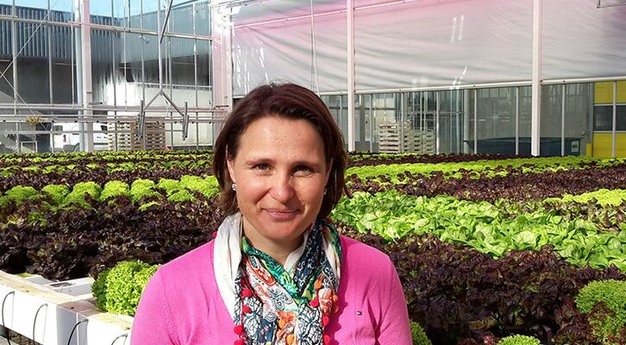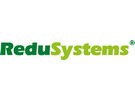The usual coating and screening practices for lettuce crops are changing. Isabel Vandevelde, researcher and instructor, speaks about these developments.
In Belgium and the Netherlands, crops such as head lettuce and other types of lettuce grown under glass are known as relatively cold crops requiring moderate light levels, most certainly in comparison to other greenhouse vegetables. To protect the crop against excessive radiation, growers have developed a system that involves the combined use of coatings and a movable screen. ‘Starting in March, they close the transparent screens when this is necessary. After May 20th, they apply a coating on the greenhouse,’ says Isabel Vandevelde.

At least, that was the usual approach in the past. However, the past three years have shown the need for a different approach. ‘This year, out of necessity, growers started using the screens in mid-February,’ she says.
Vandevelde spends half of her time as a researcher at the Research Station for vegetables in Sint-Katelijne-Waver in Belgium. The other half of her time is spent consulting growers in Belgium, the Netherlands, and various regions in Europe. ‘The research is very broad in scope. Research into varieties plays a key role. In addition, we also devote attention to climate, crop protection, fertilizing, water treatment, lighting, etc.’ The same topics are addressed during information sessions with growers.
"This year, out of necessity, growers started using the screen in mid-February" says Isabel Vandevelde.
Climate change
In her consulting role she definitely encounters the challenges posed by climate change. ‘Growers are forced to make use of their movable screens and to apply coatings sooner. In the past, growers had to watch out for Tip Burn (brown (dried) inner lettuce leaves). The varieties have improved in this respect. However, nowadays we are seeing an increase in root rot due to higher greenhouse temperatures,’ she says.
In those crops grown in soil, Fusarium oxysporum and Plectosphaerella cause the leaves to wilt and also cause root rot. In hydroponically grown crop (in gutters or floating), this is caused by Phytophthora cryptogea. ‘These fungal diseases are now an important reason for reducing radiation,’ she indicates.
The most often used screen is a transparent energy screen that blocks approximately 25% of the light. ‘Whenever this is called for, the growers close the screen by 50-60%. You cannot close the screen completely as the temperature would increase too much. While this results in lighter and darker bands of light, this does not appear to be serious in actual practice: there is no obvious unevenness in the crop. In hydroponically grown crops using gutters, this is because the gutters are constantly moving. There are no major problems with those crops grown in-ground either. The sun itself also moves and this causes the bands of light to shift as well.’
Coating
Traditionally, May 20th has been the target date on which to apply a coating on the greenhouse. This is also changing. ‘The following recommendation is now used: a “permanent coating” must be applied when we are having three consecutive days above 25°C. In hydroculture, this also applies to older plants, but small tray plants dry out more easily. In this case, you must start applying the coating at the end of April.’
By far, most growers opt for ReduSol. ‘In fact, there has not been enough research to determine the best coating for lettuce. Experience with ReduSol in actual practice has been positive, which is why growers are sticking with this product. ReduHeat could also be an option, but it is also more expensive. This might not work as lettuce crop margins are not all that high.’
Crop-specific recommendations
For Lamb’s lettuce Vandevelde adheres to the standard recommendation for the coating’s concentration (number of buckets per hectare). ‘This is a crop that benefits from significant screening. For head lettuce, we recommend somewhat less coating than the recommended quantity.’
The red lettuce varieties, such as red oak leaf lettuce and Lollo Rosso, require tailored advice because they require radiation for coloring. Vandevelde: ‘Traditionally, applying a coating for red varieties was out of the question because it caused a loss of color, but today this is clearly changing due to climate change. The crop becomes too stressed and must be screened. We came up with a special solution to this in the past: a splatter pattern of ReduSol on the greenhouse.. The splatter effect causes a sufficient drop in temperature and a sufficient reduction in light while leaving sufficient radiation for coloring.’ Nowadays, special diffuse coatings are available that potentially could be even more effective.
Removal Date
The standard recommended coating removal date is August 15th, for in-soil as well as hydroponic crops. This date is also moving up: in 2020 there was a heatwave in mid-August, making removal of the coating an irresponsible option. ‘Good common sense should be applied in checking the weather forecast. Once the ReduSol has been removed from the greenhouse cover, growers still continue to use the movable screens in September. This continues into October,’ she says.
Together with her colleagues, she continues to search for solutions to the root problems at the research station. In the hydroculture crops, cooling the water and increased oxygen provide possible directions for possible solutions.
For more information: ReduSystems
ReduSystems
+31(0)13 507 53 99
sales@redusystems.com
www.redusystems.com
